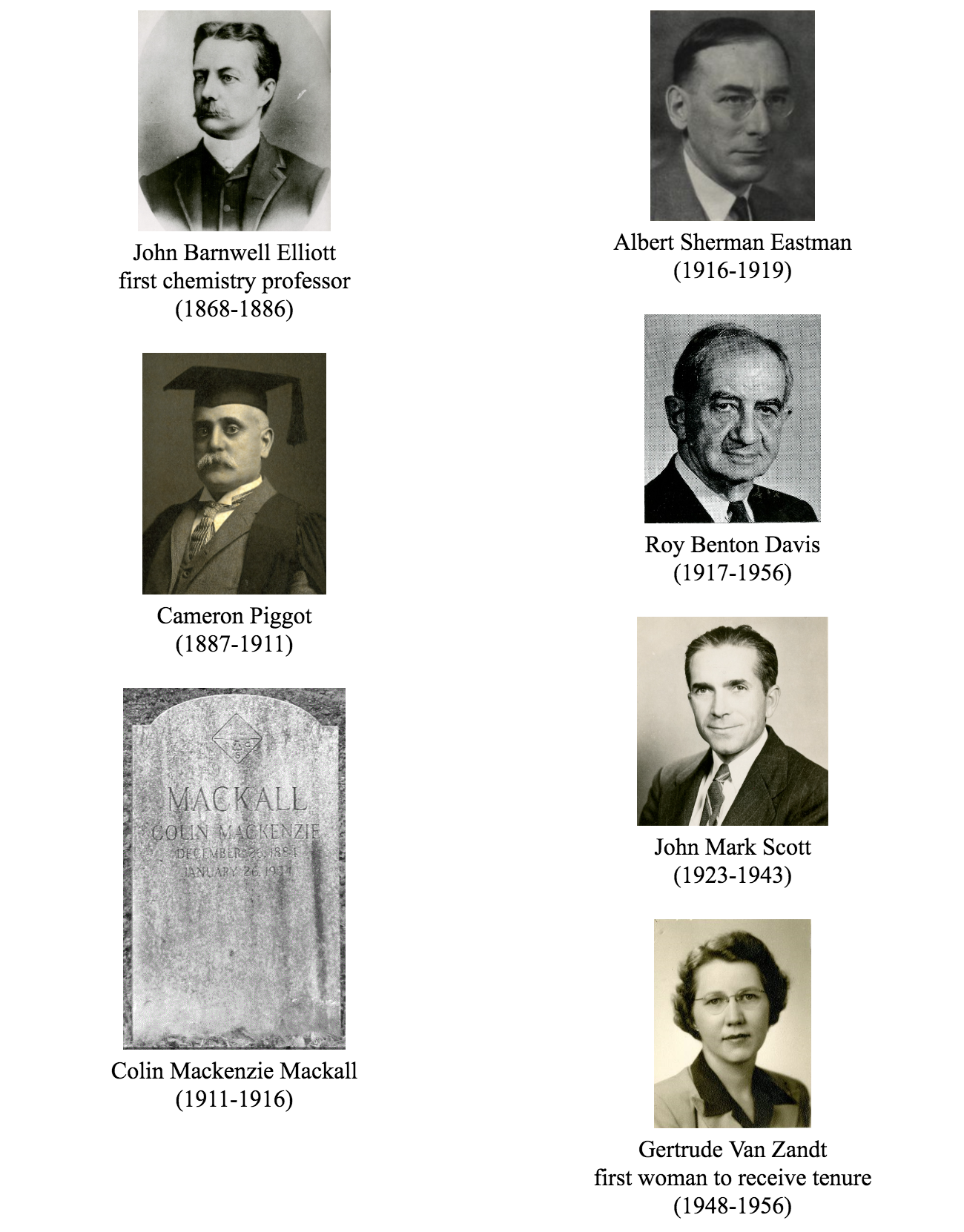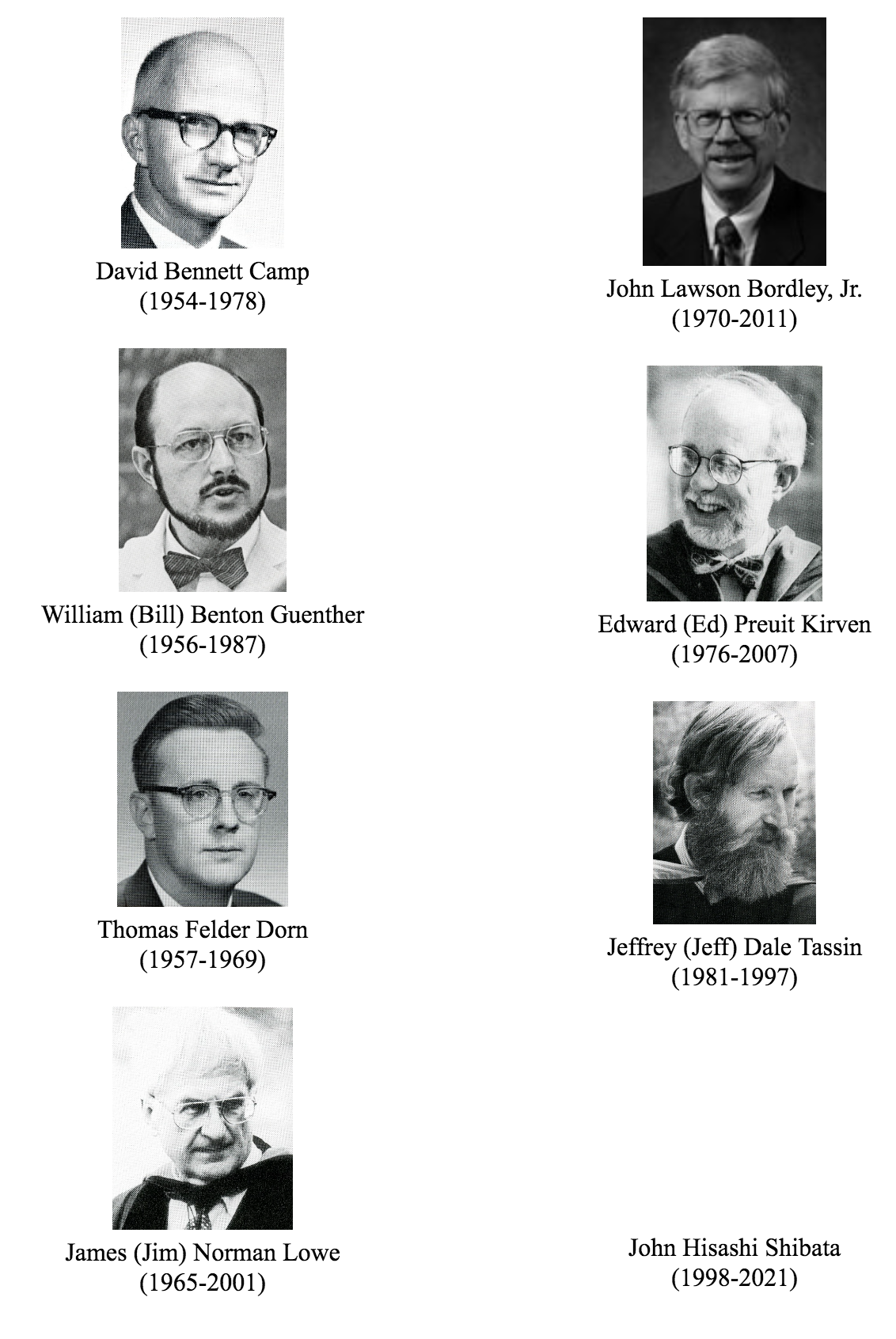History and mission of the chemistry department at the university of the south
In 1870, one of the original “seven schools” at the university was the chemistry department. Students pursuing a bachelor’s degree in the early years of the university were required to show mastery of the discipline. The first professor in charge of chemistry was John Barnwell Elliott, who was a resident physician at the time.
Near the turn of the century, the demand for better facilities and equipment for the sciences was evident. With Andrew Carnegie’s pledge of exactly $60,000, Carnegie Science Hall was completed in 1913. The new building provided much-needed classrooms and laboratories for the sciences at the university. The chemistry department was housed in Carnegie Science Hall until 1968.
After WWII, the number of students at the university increased significantly, with enrollment surpassing 500 in 1947. As a result of this, the number of department faculty increased to three that year. Also in 1947, the first woman to be offered a tenure-track professorship was a chemistry professor. Gertrude Van Zandt was also the first woman to receive tenure at the university.
Around 1960, the chemistry department received about $13,000 per year for instrumentation and library resources. Funding sources at this time included the Research Corporation, the Lilly Endowment, the Esso Foundation, the Petroleum Research Fund, and the National Science Foundation. Around this time, instrumentation included a gas chromatograph, an infrared spectrometer, and a UV-visible spectrophotometer. During this time, the chemistry department also received $8,000 from the Atomic Energy Commission for the establishment and maintenance of the Sewanee Radioisotopes Laboratory, which had a 40-Curie gamma-ray source.
During the 1960s, the university was growing steadily, with enrollment exceeding 600 for the first time. It was clear at this time that the sciences needed improved facilities and equipment to keep up with this growth. In 1968, the chemistry department moved from Carnegie Science Hall to J. Albert Woods Laboratories. The largest building on campus at the time, this 80,000-square-foot facility was named for one of the university’s most devoted alumni, J. Albert Woods (Class of 1918). At an approximate cost of $1.5 million, Woods Laboratories was intentionally built to be larger than immediate needs dictated, which was appropriate for a growing campus during this time. In fact, the third floor of the building was only roughed in at the time. (In the 1990s, the third floor of Woods Labs was completed when the need for more classroom and laboratory space was clearly demonstrated.)
As the department entered the 21st century, a renewed emphasis on undergraduate research opportunities for students was noticeable. This increase in scholarship included the publishing of papers in which students were listed as co-authors with faculty members. A nationwide trend in interdisciplinary programs at liberal arts institutions did not go unnoticed on campus. In 2003, the chemistry department (along with the biology department) offered a new interdisciplinary program, a major and a minor in biochemistry.
In 2008, the chemistry department benefited greatly from the addition of Spencer Hall. This 47,000-square-foot addition to Woods Laboratories ushered in a new era for the university’s historic commitment to the sciences. The facility greatly expanded classrooms and laboratories for chemistry, while also creating space for the new biochemistry program. Spencer Hall was named for alumnus William Spencer (Class of 1941).
Students have the opportunity to conduct research during the summer in the chemistry department. Endowed chemistry research internship funds available for students are named for I. Croom Beatty III (Class of 1935), Roy Benton Davis, and E. Rex Pinson, Jr. (Class of 1948). The department continues to benefit from external sources of funding to support our research efforts. Recent sources include the National Science Foundation, the National Institutes of Health, the Research Corporation, the Petroleum Research Fund, the American Philosophical Society, and the Associated Colleges of the South.
Tenured Faculty (years at the University in parentheses)


Sources and Acknowledgments:
All images courtesy of University Archives and Special Collections, The University of the South except for the image of Colin Mackenzie Mackall [Fred Sanford (findagrave.com)] and Albert Sherman Eastman [University of Delaware].
W. Brown Patterson “The Liberal Arts at Sewanee: A History of Teaching and Learning at the University of the South”, 2009.
Samuel R. Williamson, Jr. “Sewanee Sesquicentennial History: The Making of the University of the South”, 2008.
George Rainsford Fairbanks “History of the University of the South, at Sewanee, Tennessee: From Its Founding by the Southern Bishops, Clergy, and Laity of the Episcopal Church in 1857 to the Year 1905” H. & W.B. Drew Company, 1905.
The Carnegie Foundation for the Advancement of Teaching, Volume 13, 1918.
“Science at Sewanee: science in the liberal arts tradition” a statement by the Science Faculty of the University of the South, 1960.
Numerous “Cap and Gown” yearbooks from the University of the South.
Special thanks to Matthew Reynolds in University Archives and Special Collections.

